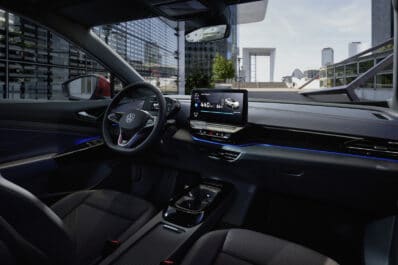Ford plans to double its original production target for the all-electric F-150 Lightning pickup when it launches next year, according to a report by Reuters.
That’s in line with comments Ford insiders made to TheDetroitBureau.com in recent days, preliminary reservations for the truck well exceeding the automaker’s original estimates. But a final decision, this website was told, wasn’t going to be made until closer to the launch of production, currently scheduled to begin around the beginning of June.

What’s clear is that Ford has received a warm reception for the Lightning, with those preliminary reservations well in excess of 100,000 already. Ford initially laid out plans to produce just 40,000 of the pickups annually.
“They were pleasantly surprised by the demand for the Lightning,” one of the sources said of Ford officials, according to Reuters.
EV pickups clicking with potential customers
That was echoed in conversations TheDetroitBureau.com had this past week. Insiders said they were outright shocked by the interest in an all-electric version of the truck. The broader Ford F-Series line-up is not only the automaker’s most profitable vehicle but the best-selling nameplate in the U.S.
Demand for EV pickups, in general, has far exceeded what many observers were expecting just a couple years ago. Tesla has indicated it’s received more than 400,000 reservations for its own Cybertruck. What may be helping Ford is the fact that the Tesla model is running well behind schedule and won’t be available until at least next year, CEO Elon Musk recently confirmed. It may not even go into production until 2023.
There are an assortment of other all-electric pickups in the works, however. The GMC Hummer will debut in the fourth quarter, though initial production will be extremely limited and focus on models coming in at over $100,000. Start-up Rivian is expected to beat Ford to market with its own R1T model, while Bollinger is readying its own EV pickup for next year. A second GMC pickup, as well as entries from Ram and several other start-ups are also coming.

(TheDetroitbureau.com gets its first ride in the Ford F-150 Lightning. Click Here to learn what it was like.)
Lower operating costs
One reason for the strong demand appears to be a dramatic change of perspective by the commercial vehicle market. Fleet operators and contractors are particularly focused on operating costs and that is where EVs are expected to have an edge, with substantially lower energy and maintenance costs quickly offsetting higher initial prices.
Ford is adding further incentive by introducing a base commercial version of Lightning set to start at $39,974. That version will offer 230 miles range. The 300-mile Lightning will start at $49,974.
“We are excited with customer demand for the F-150 Lightning and already have 120,000 customer reservations, and we will continue to look for ways to break constraints and meet customer demand,” the automaker said in a statement Monday.
One of the questions Ford has to consider is whether initial reservations for Lightning will be maintained after the first customers take delivery. A source told TheDetroitBureau.com that was one of the reasons why initial production was set to gear up slowly. But, if even two-thirds of the current bank of reservations were to convert to actual sales, it would take until 2023, at the earliest, to deliver enough of the trucks.

Increased production will come at a cost
Reuters’ sources indicated that the new goal is to boost production from 40,000 annually to 80,000 by 2024, though that will be handled in stages – and reportedly require an additional $850,000 in investments at Ford’s Rouge Assembly complex in Dearborn, Michigan.
Only about 15,000 of the trucks are expected to roll out in 2022, the service said, quoting its sources, reaching 55,000 in 2023 and 80,000 the following year. Ford now wants to approach 160,000 by 2025.
That year, Ford plans to completely redesign the Lightning. The initial model will use a modified version of the standard F-150 platform. For 2025, however, it will switch to a dedicated architecture, dubbed TE-1, shared with other electrified trucks. It will offer numerous advantages, including more hidden storage space and, Ford insiders have said, room for more batteries, improving both range and payload.
Ford has nearly tripled its commitment to electrification over the past 18 months, the automaker now planning to spend more than $30 billion by 2030. It has so far confirmed three long-range EV models: the Lightning, a commercial delivery van and the Mustang Mach-E launched late last year. That sporty model is now the nation’s second best-selling electric SUV, behind the Tesla Model Y.







